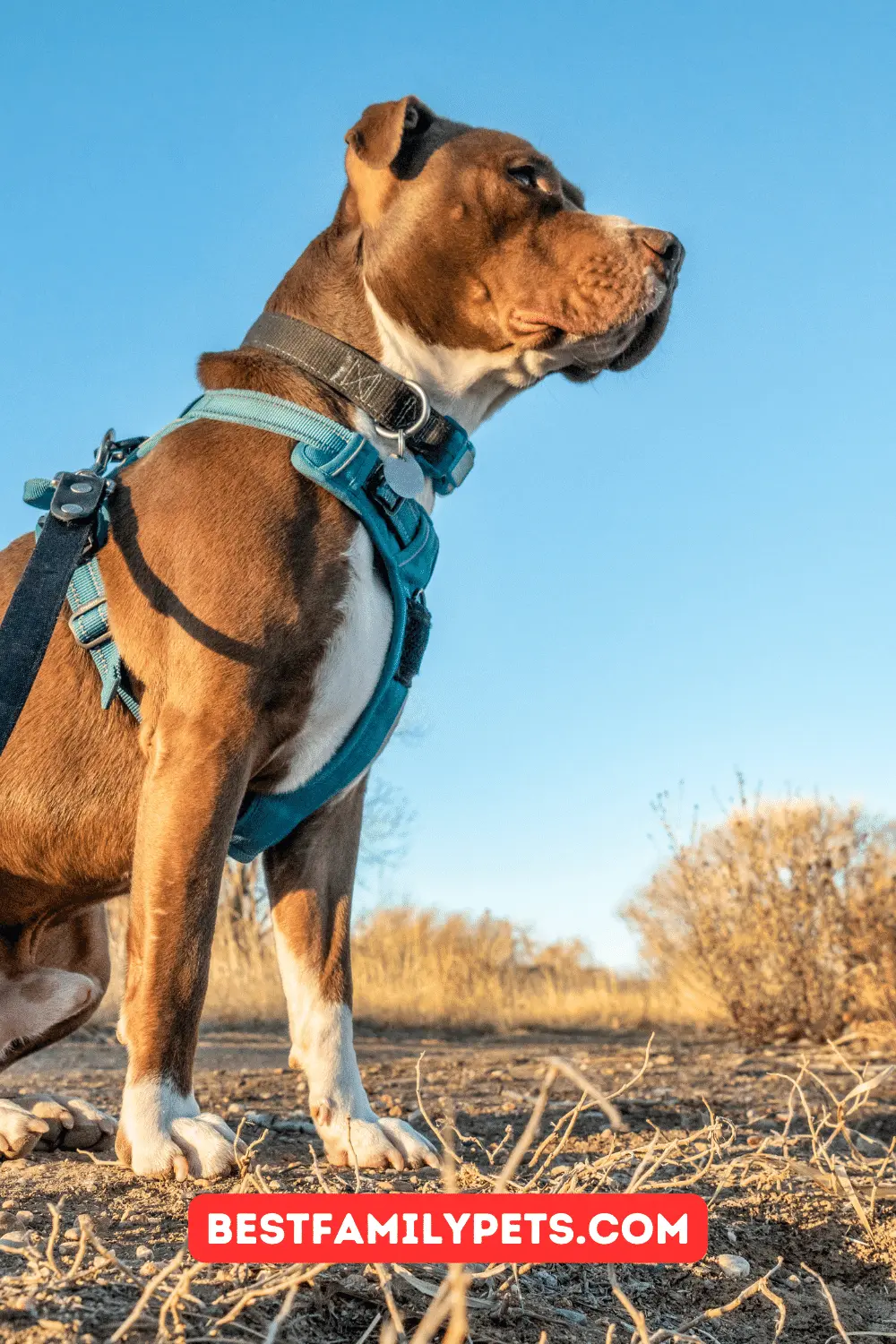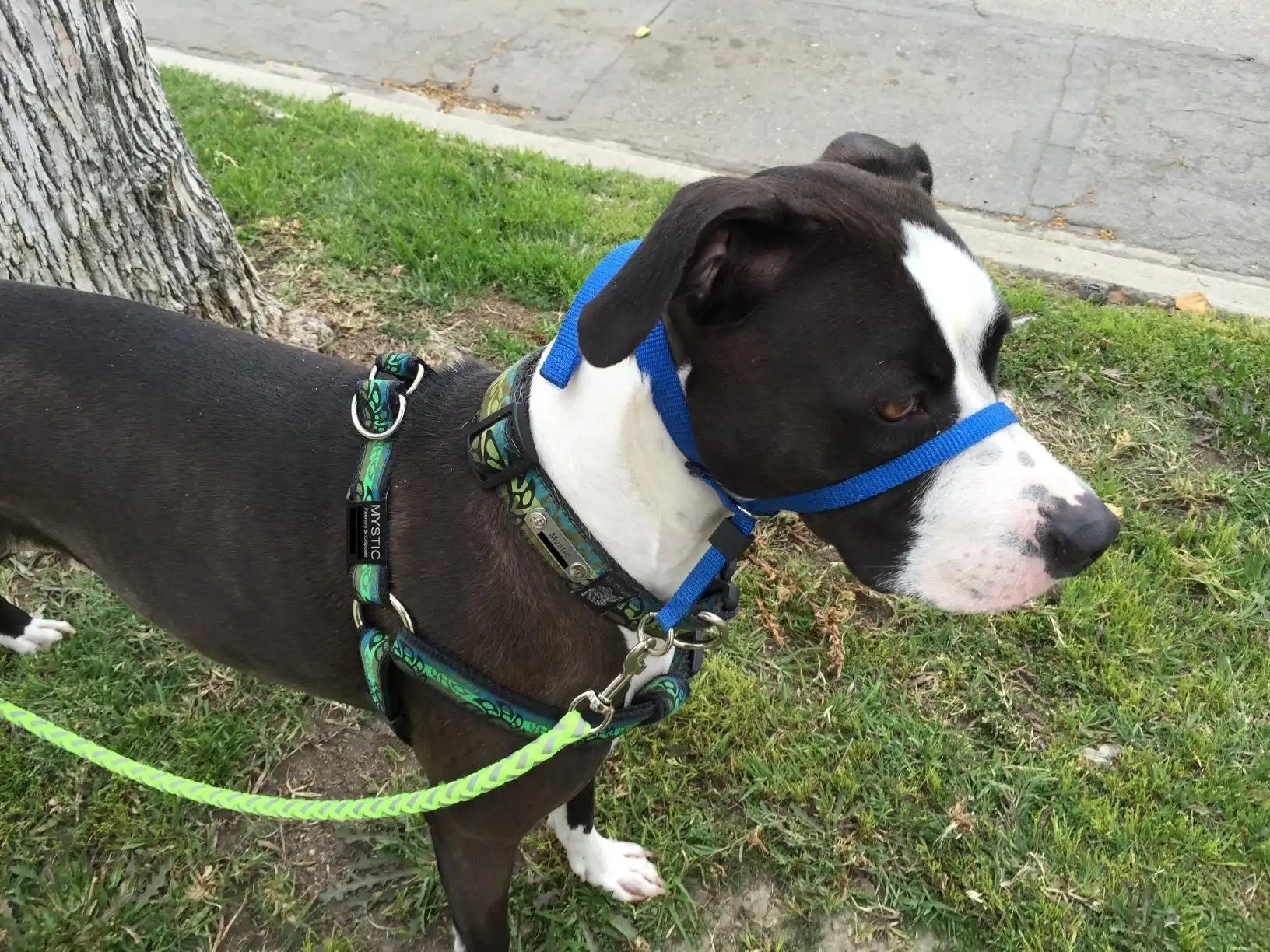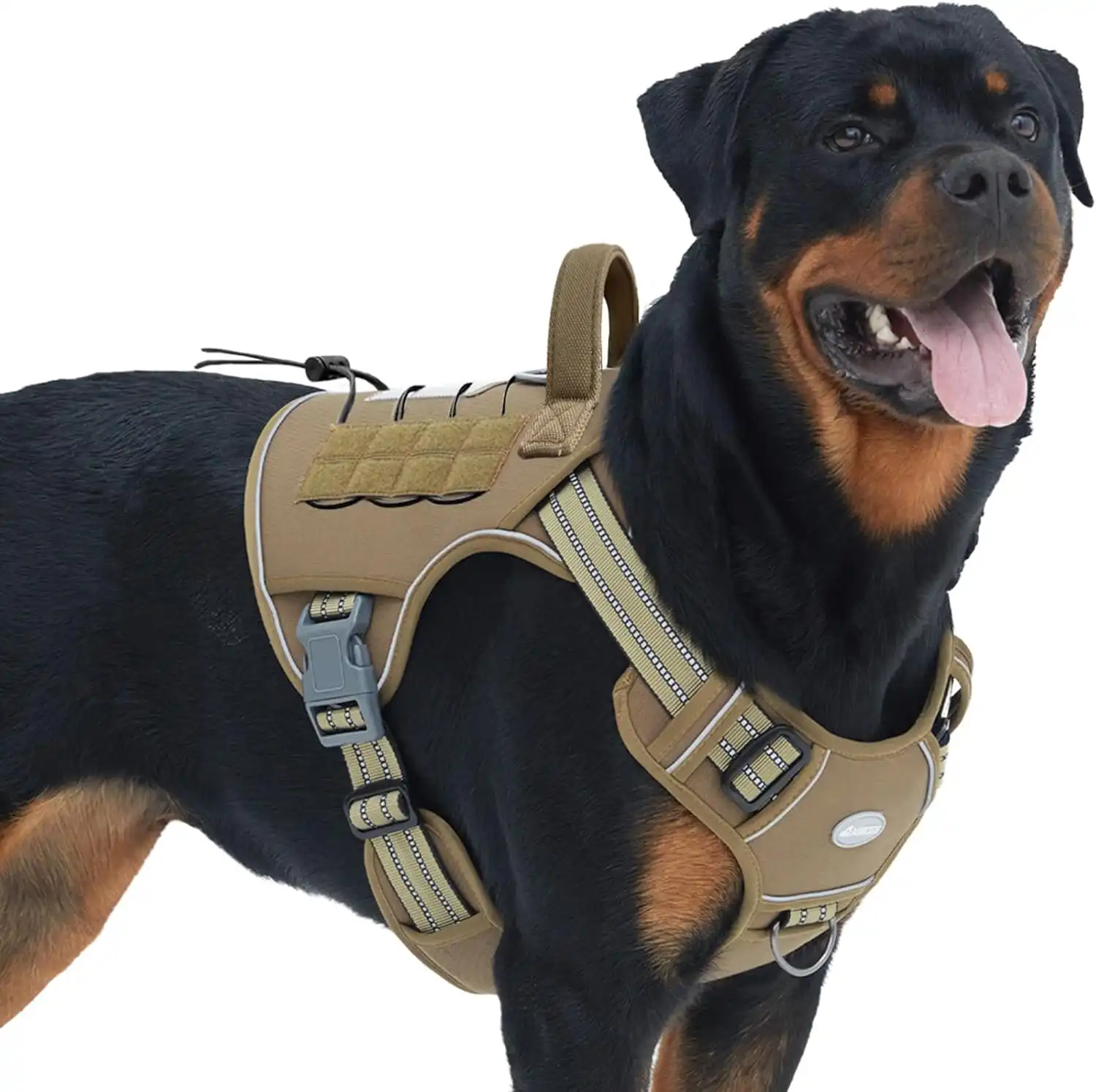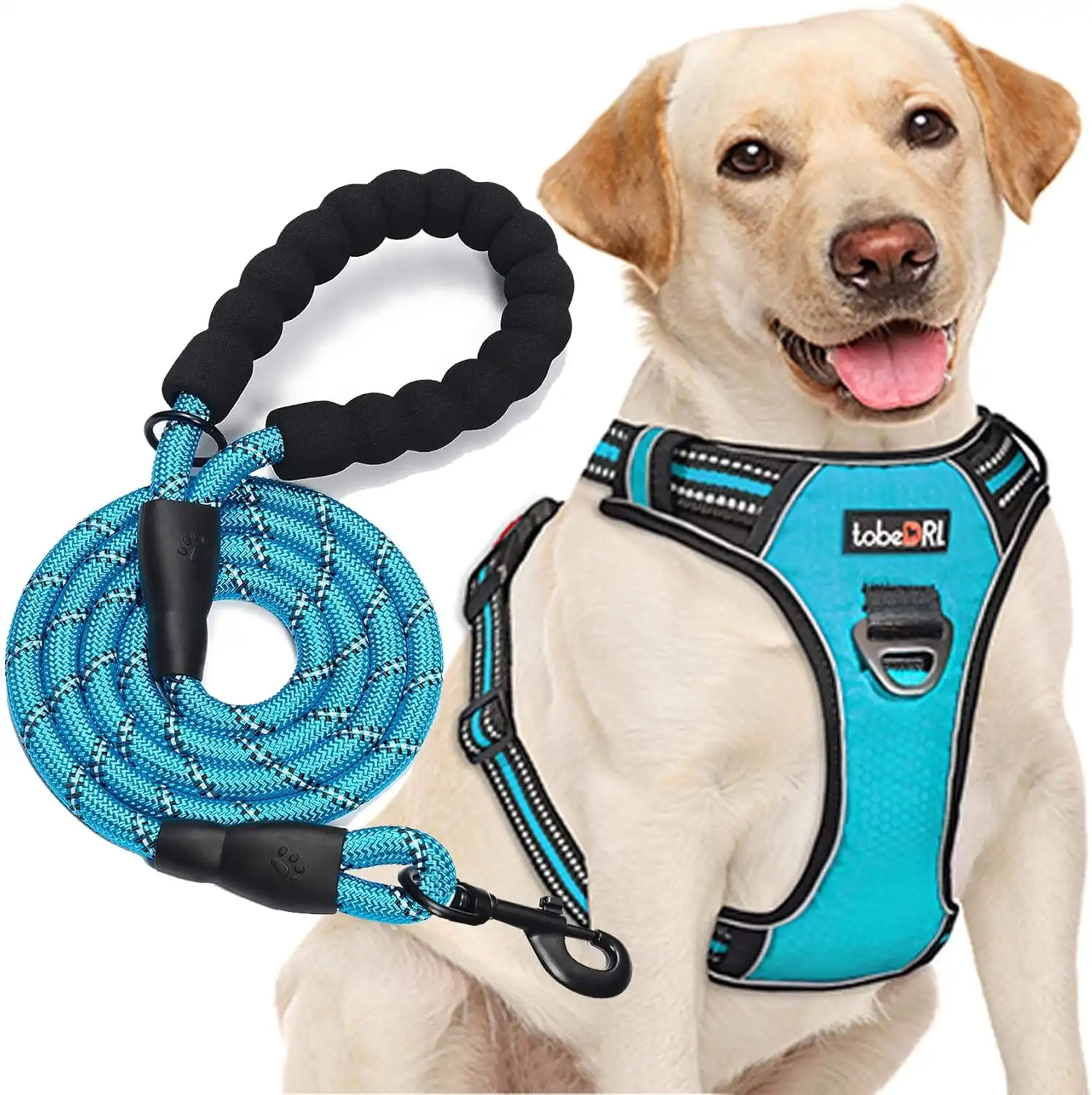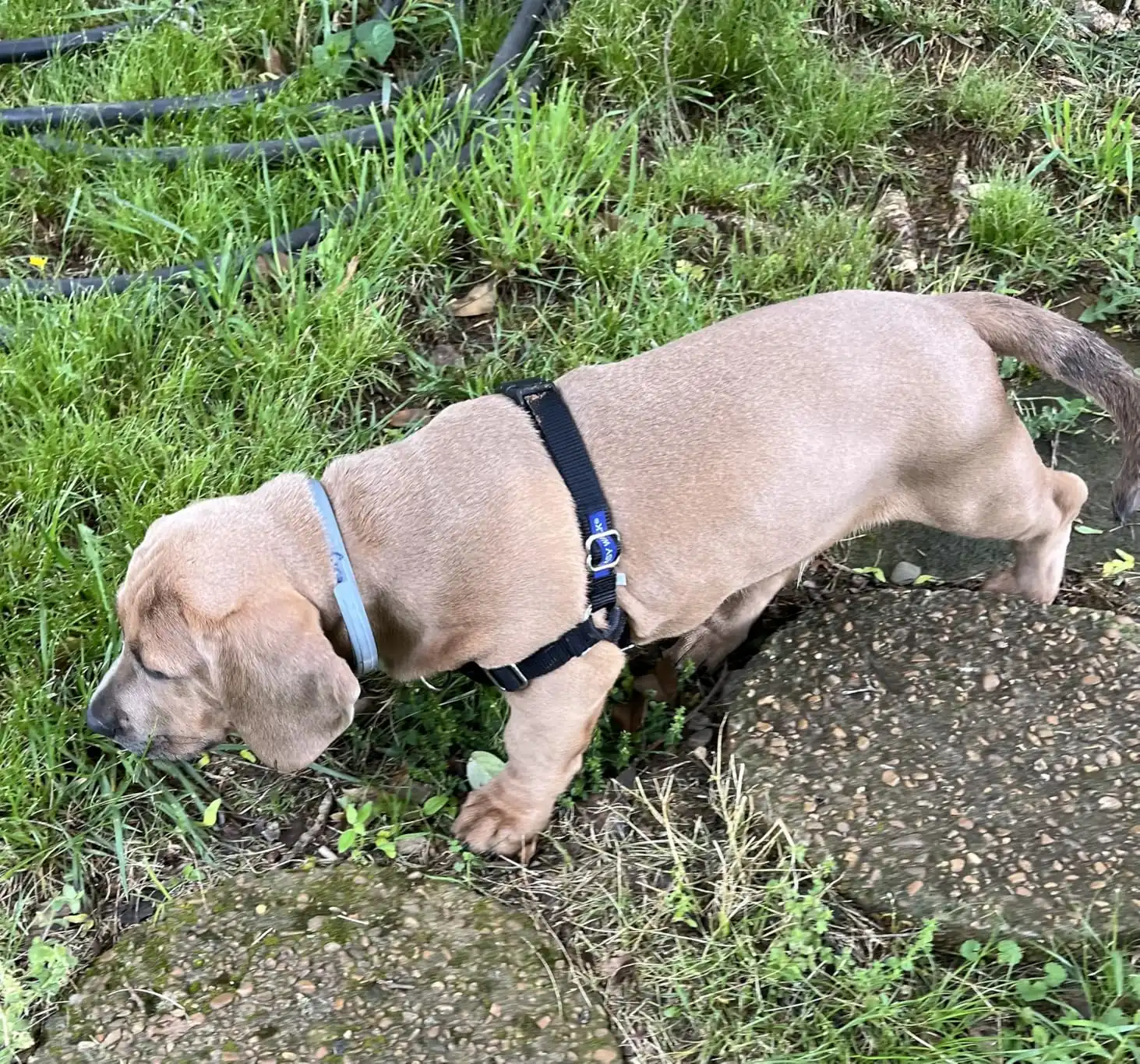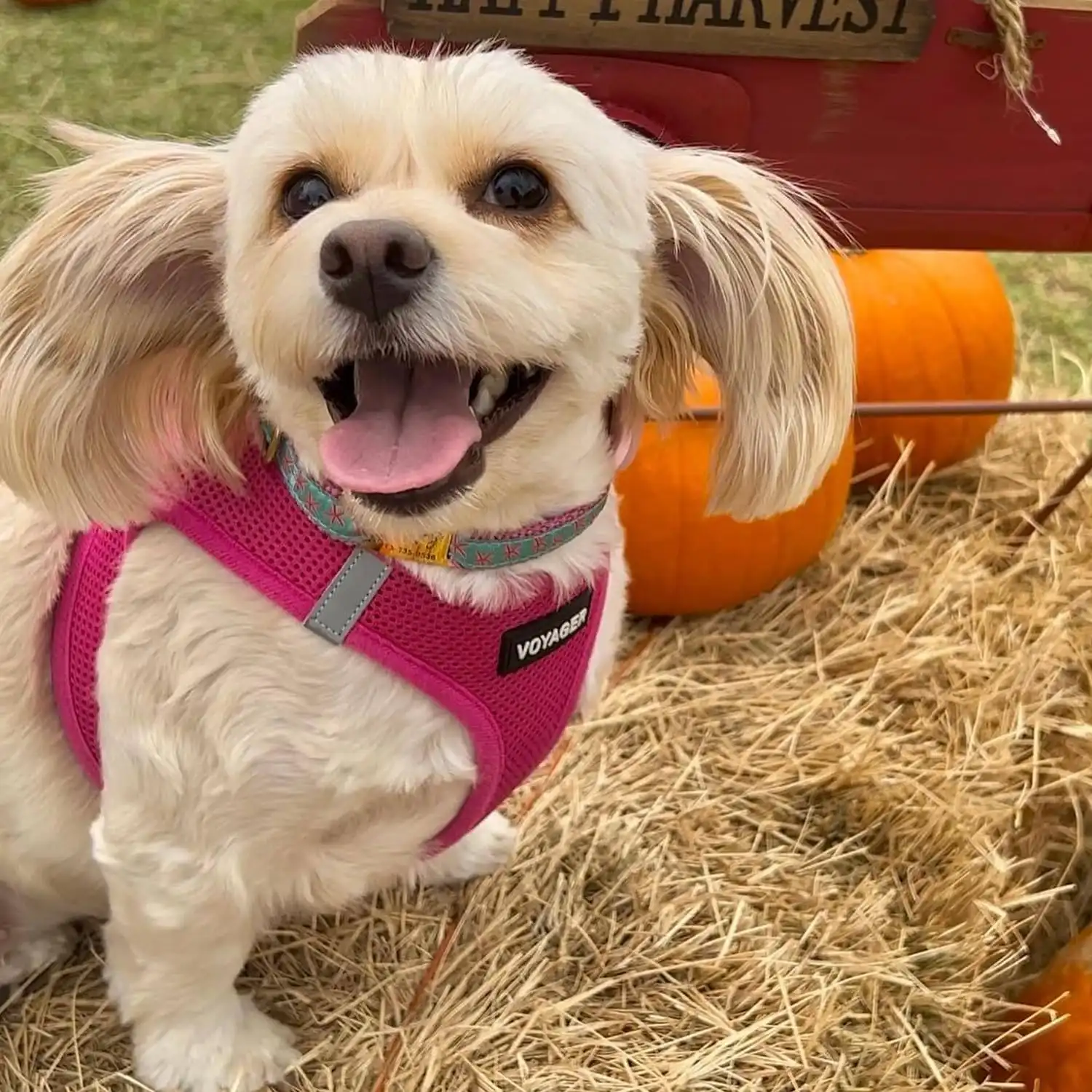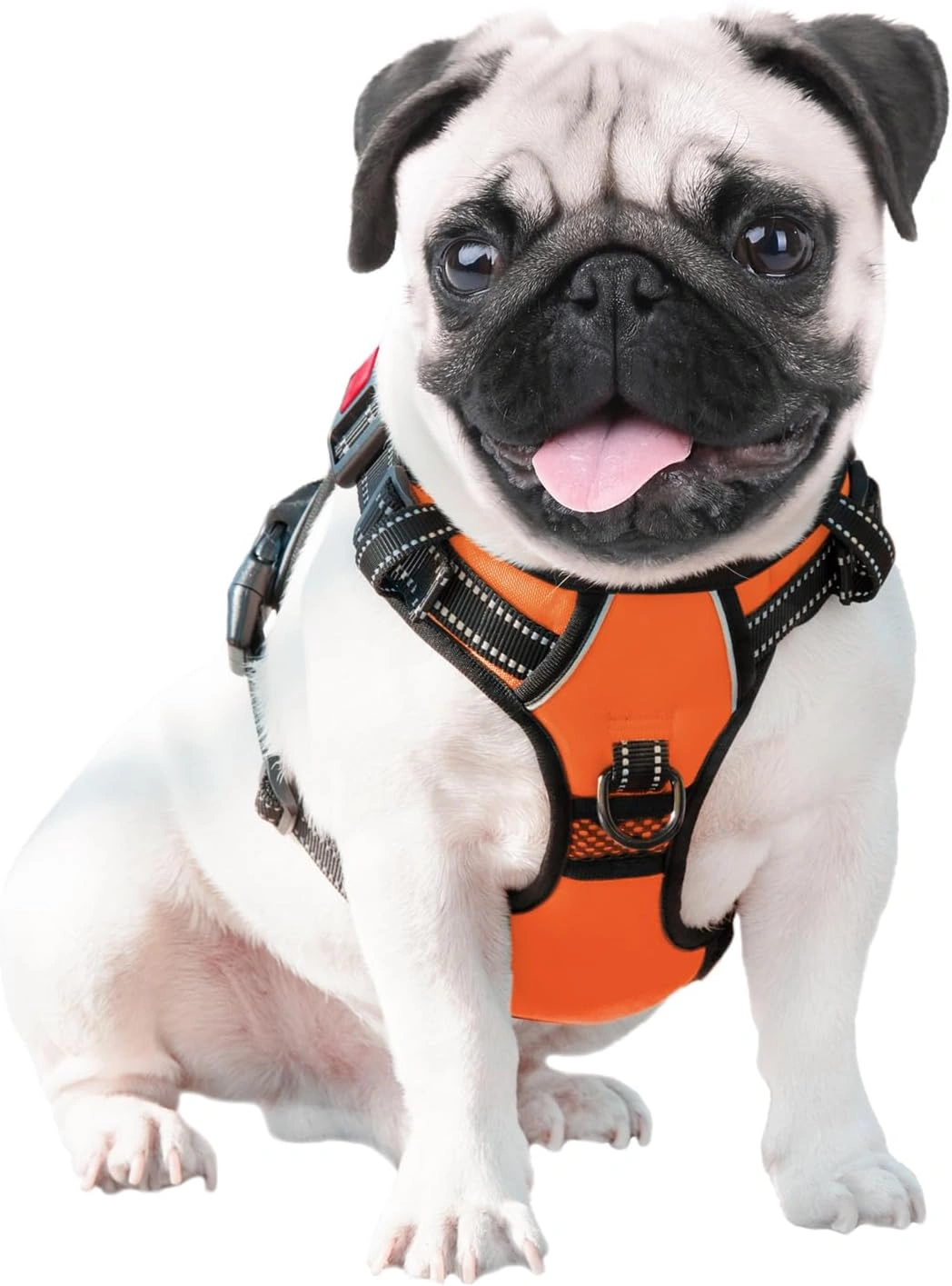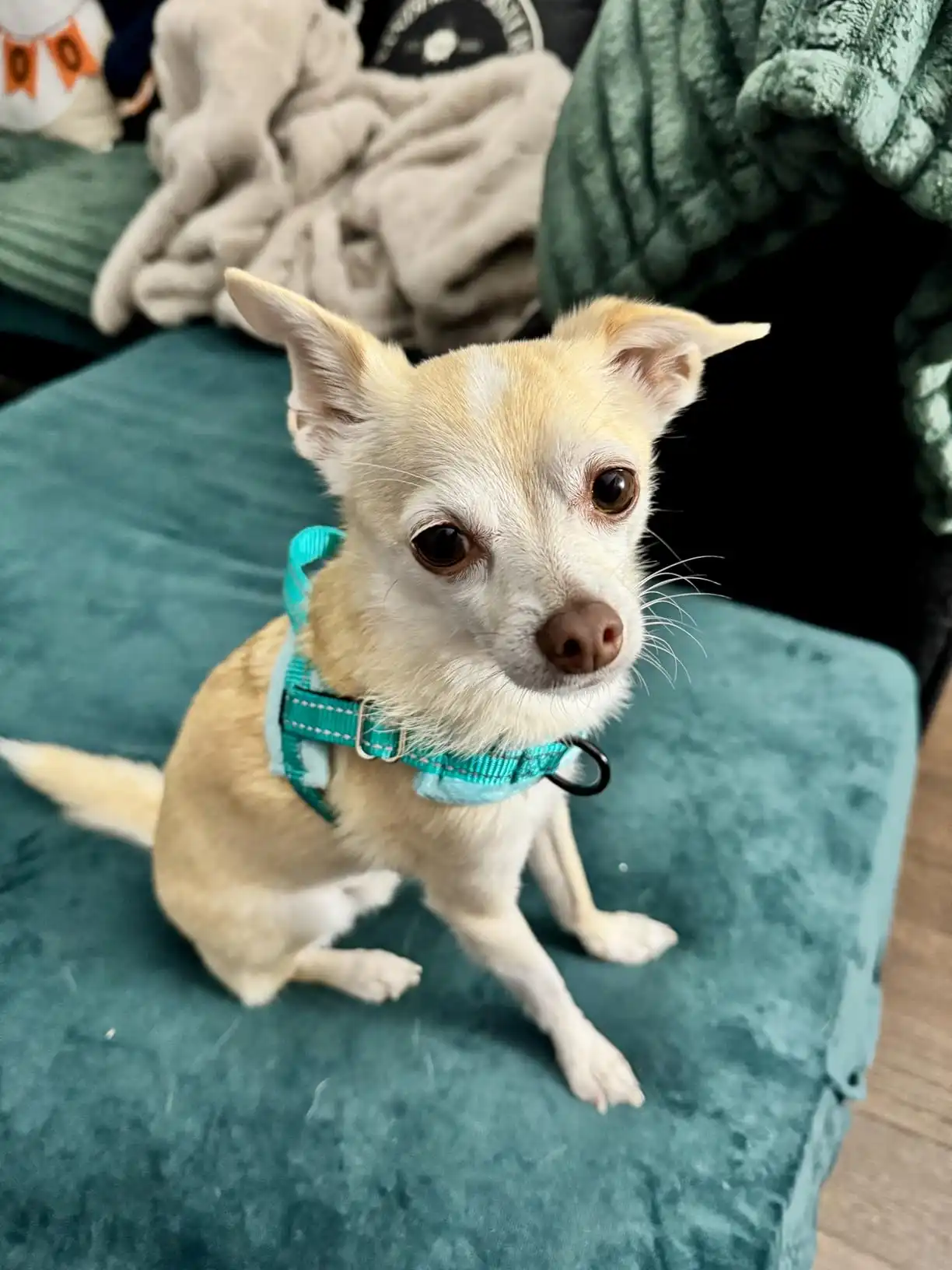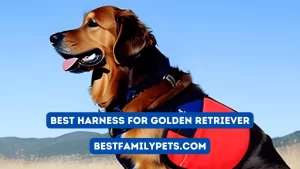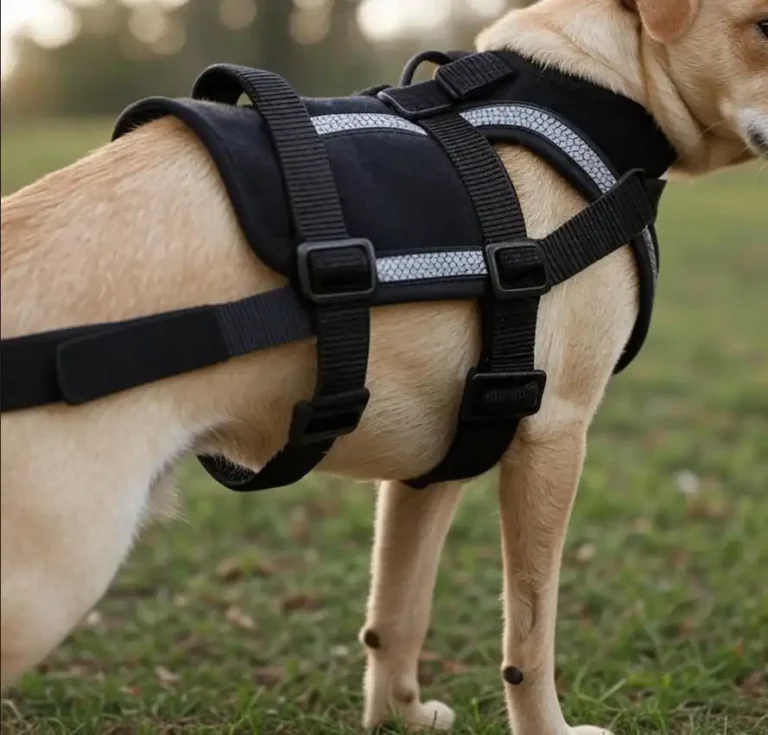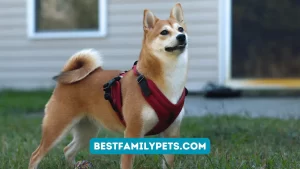Choosing the Best Dog Harness for Hip Dysplasia
Finding the best dog harness for hip dysplasia? This guide explores options for support, comfort, & mobility, helping your furry friend live an active life.
For many dog owners, their furry companions are more than just pets – they’re beloved family members. So, when a diagnosis like hip dysplasia hits, it can be a real blow. This condition, which causes abnormal development of the hip joint, can lead to pain, limited mobility, and a decrease in your dog’s quality of life. But there is hope! Choosing the right dog harness for hip dysplasia can make a significant difference in managing your dog’s condition and helping them live a happy and active life.
In this blog post, we’ll delve into the world of dog harnesses for hip dysplasia, equipping you with the knowledge to choose the perfect one for your furry friend. We’ll explore the benefits of using a harness, key features to consider, and even touch upon some additional tips to ensure your dog’s comfort and well-being. With the right guidance, you can find the ideal harness to support your dog on their journey to a happier, more active life.
What is Hip Dysplasia in Dogs?
Hip dysplasia is a common condition affecting the hip joint in dogs, particularly large and giant breeds. It occurs when the ball and socket joint of the hip don’t develop properly, leading to instability, pain, and difficulty moving. If you suspect your dog might be suffering from hip dysplasia, it’s crucial to seek veterinary guidance. However, familiarizing yourself with the signs and symptoms can be the first step towards getting your furry friend the help they need.
Here’s a breakdown of what hip dysplasia entails:
- Abnormal Development: In a healthy hip joint, the ball of the femur (thigh bone) fits snugly into the socket of the pelvis. However, in hip dysplasia, the socket is shallow and doesn’t fully cover the ball, causing instability and friction.
- Pain and Stiffness: This abnormal development can lead to pain and discomfort, especially during movement. You might notice your dog limping, having difficulty getting up or down, or showing a reluctance to engage in activities they once enjoyed.
- Reduced Mobility: As the condition progresses, the instability and pain can significantly impact your dog’s mobility. They may exhibit a bunny-hopping gait, have difficulty climbing stairs, or show reduced overall activity levels.
By understanding the signs and symptoms of hip dysplasia, you can be more aware of your dog’s well-being and seek veterinary attention promptly if needed. Remember, early diagnosis and proper management can significantly improve your dog’s quality of life and help them maintain an active and engaging lifestyle.
Signs and Symptoms of Hip Dysplasia in Dogs
Hip dysplasia can significantly impact a dog’s mobility and enjoyment of life. While not all dogs with hip dysplasia exhibit visible signs, being familiar with the common symptoms can help you identify potential issues early on and seek veterinary guidance.
Here are some key signs and symptoms to watch out for:
- Lameness: This is often the most noticeable symptom, with dogs limping on one or both hind legs, especially after exercise or periods of rest.
- Difficulty Rising: You might observe your dog struggling to get up from a lying or sitting position, appearing stiff or reluctant to move.
- Bunny Hopping: This unusual gait, where your dog hops on their hind legs together rather than taking alternating strides, can indicate hip pain and instability.
- Reduced Activity Level: A previously active dog may exhibit a noticeable decrease in enthusiasm for walks, playtime, or climbing stairs.
- Muscle Loss in the Thighs: Over time, due to reduced use, the muscles in the hind legs may appear weak or atrophied.
It’s important to remember that these signs can also be associated with other conditions. If you notice any of these symptoms in your dog, consulting your veterinarian is crucial to receive an accurate diagnosis and discuss proper treatment options. Early detection and management can significantly improve your dog’s quality of life and help them maintain an active and happy lifestyle.
The Significance of Choosing the Right Harness for Hip Dysplasia
A dog diagnosed with hip dysplasia can face significant challenges with mobility and pain. While veterinary treatment and physical therapy are crucial, selecting the right dog harness can play a vital role in managing their condition and improving their quality of life. Here’s why choosing the appropriate harness is important:
- Provides Pain Relief and Support: A well-designed harness distributes pressure away from the hip joint, alleviating pain and discomfort during walks or other activities. This can significantly improve your dog’s mobility and encourage them to remain active.
- Offers Lifting Assistance: Some harnesses come equipped with handles, allowing you to gently assist your dog when getting up, navigating stairs, or entering/exiting vehicles. This reduces strain on their hips and promotes a sense of security and confidence.
- Improves Control and Safety: A properly fitted harness provides better control during walks, especially for dogs who might become excited or lose balance due to their condition. This enhances safety for both you and your furry friend.
- Promotes Confidence and Activity: By alleviating pain and providing support, the right harness can boost your dog’s confidence and encourage them to engage in low-impact activities like walks or playtime. This can significantly contribute to their overall well-being and mental health.
Remember, consulting your veterinarian before introducing any new equipment, like a harness, is crucial to ensure it aligns with your dog’s specific needs and treatment plan. By choosing the right harness, you can become an active partner in managing your dog’s hip dysplasia and help them live a happier and more fulfilling life.
Essential Factors for a Hip Dysplasia-Friendly Dog Harness
Navigating the world of dog harnesses can be overwhelming, especially when considering the specific needs of a dog with hip dysplasia. However, by focusing on key factors, you can choose the perfect harness that provides comfort, support, and improved mobility for your furry friend. Here are some crucial aspects to consider:
- Support and Stability: Look for harnesses that offer chest and under-thigh support, distributing pressure away from the hip joint. This promotes stability and reduces pain during movement.
- Lifting Assistance: Consider harnesses with built-in handles, allowing you to gently assist your dog when needed, particularly when getting up, navigating stairs, or entering/exiting vehicles.
- Proper Fit: A well-fitting harness is essential. It should be adjustable to ensure a snug but comfortable fit around the chest and torso without restricting movement. Avoid harnesses that put pressure on the neck or trachea.
- Padding and Breathability: Choose a harness with padded areas in key points like the chest and underarms to prevent chafing and discomfort. Breathable materials are also essential for keeping your dog cool and comfortable during walks.
- Ease of Use: Look for harnesses that are easy to put on and take off for both you and your dog. This will make walks and outdoor adventures more enjoyable for everyone.
By prioritizing these factors, you can select a harness that empowers your dog to regain confidence and rediscover the joy of movement. Remember, consulting your veterinarian before introducing a new harness can ensure it aligns with your dog’s specific needs and treatment plan. Together, you can create a happy and active life for your furry friend, even with hip dysplasia.
Exploring Different Types of Dog Harnesses for Hip Dysplasia
With various dog harnesses available, understanding the different types can help you make an informed decision for your dog’s specific needs and comfort.
Here are some common types of dog harnesses suitable for dogs with hip dysplasia:
- Front-Clip Harnesses: These harnesses clip at the front, near the dog’s chest. This design helps redirect pulling forces away from the hips and towards the chest, offering better control and reducing strain on the hip joint.
- Support Harnesses: These harnesses often have wider chest and under-thigh straps, providing additional support and stability for the hip joint. They may also feature built-in handles for lifting assistance.
- Lifting Harnesses: Designed specifically for dogs with mobility limitations, these harnesses feature padded slings underneath the belly and hind legs, allowing you to comfortably and safely lift and support your dog when needed.
- Body Wraps: These are flexible wraps that provide mild compression and support around the core and hindquarters. While not offering the same level of control or lifting assistance as other harness types, they can be beneficial for pain management and improved proprioception (body awareness).
It’s important to note that not all harnesses within these categories are suitable for every dog with hip dysplasia. Consulting your veterinarian and a professional dog trainer can help determine the best type and specific features that cater to your dog’s individual needs and condition. Remember, the goal is to choose a harness that promotes comfort, support, and mobility, allowing your furry friend to experience a happier and more active life.
Reviews of Top Dog Harnesses for Hip Dysplasia
Finding the right dog harness for your furry friend with hip dysplasia can be overwhelming. With so many options available, it’s crucial to consider factors like support, adjustability, and comfort.
Here are some highly-rated dog harnesses for hip dysplasia, categorized by type and accompanied by brief summaries to guide your decision-making process:
Front-Clip Harnesses:
- BARKBAY Front-Clip Harness: This harness features a padded chest plate and a front-clip attachment that redirects pulling forces away from the hips. It’s available in various sizes and colors, making it a versatile option for different breeds.
- Ruffwear Front Range Harness: This harness offers exceptional adjustability and a comfortable fit. Its padded construction and front-clip design promote control and reduce strain on the hips.
Support Harnesses:
- EMBark All-Terrain Support Harness: This harness boasts a wide chest plate and padded under-thigh support straps, providing excellent stability and pain relief for dogs with hip dysplasia. It also features a convenient handle for lifting assistance.
- Kurgo Tru-Fit Smart Harness: This innovative harness uses a unique Tru-Fit system for a customized fit. It offers excellent support and a comfortable design, making it a great choice for dogs with hip dysplasia.
Lifting Harnesses:
- Help Em Up Lift Harness: This harness features a padded under-belly sling and leg loops, allowing you to comfortably and securely lift and support your dog when needed. It’s ideal for dogs who require extra assistance due to mobility limitations.
- ComfyLift Dog Lifting Harness: This easy-to-use harness provides gentle lifting support with its padded under-belly sling and secure straps. It’s a good choice for smaller dogs or those who need occasional assistance.
Body Wraps:
- Thundershirt Classic Dog Anxiety Vest: While not specifically designed for hip dysplasia, this body wrap can provide mild compression and comfort, potentially aiding pain management and anxiety. It’s important to consult with your veterinarian before using a body wrap, as it may not be suitable for all dogs.
- NeoAlly Dog Anxiety Wrap: This wrap offers a similar function to the Thundershirt, providing gentle pressure and promoting calmness. It’s essential to consult with your veterinarian before using this product on your dog.
Remember, these are just a few examples, and the best harness for your dog will depend on their individual needs and preferences. Consulting with your veterinarian and a professional dog trainer can provide valuable guidance in selecting the most appropriate harness for your furry friend.
How to Properly Fit and Adjust a Dog Harness for Hip Dysplasia
Finding the perfect dog harness for your furry friend with hip dysplasia is only half the battle. Ensuring a proper fit is crucial to maximize comfort, support the hip joint, and prevent additional strain. Here are some essential steps to follow when fitting and adjusting a dog harness for hip dysplasia:
- Measure Your Dog: Before purchasing a harness, measure your dog’s chest circumference and neck girth using a soft measuring tape. Refer to the manufacturer’s size chart to choose the appropriate size for your dog.
- Start Loose: Begin with the harness straps loosely fastened. Gradually tighten them until you can fit two fingers comfortably between the straps and your dog’s body. Avoid over-tightening, which can restrict movement and cause discomfort.
- Check for Pressure Points: Pay close attention to areas where the harness might rub or cause pressure, especially around the chest, under the arms, and around the neck. Look for any signs of discomfort, such as your dog pawing at the harness or trying to escape it.
- Adjust for Movement: Ensure the harness doesn’t restrict your dog’s natural gait. Observe their movement during walks or playtime. The harness should allow for full range of motion without inhibiting their stride.
- Lifting Assistance: If your harness features a handle, practice lifting your dog gently to assess its comfort and ensure it provides adequate support and stability.
- Consult a Professional: If you’re unsure about any aspect of fitting or adjusting the harness, consult your veterinarian or a professional dog trainer. They can provide guidance and ensure the harness is properly fitted to meet your dog’s specific needs.
By following these steps and prioritizing a comfortable and supportive fit, you can ensure your dog benefits from the full potential of their new harness and enjoys a happier and more active life, even with hip dysplasia.
Beyond the Harness: Additional Tips for Managing Hip Dysplasia in Dogs
While choosing the right dog harness can significantly improve your dog’s comfort and mobility with hip dysplasia, it’s important to remember that it’s just one piece of the puzzle. Here are some additional tips to help you effectively manage your dog’s condition:
- Consult Your Veterinarian: Regular veterinary checkups are crucial for monitoring your dog’s hip dysplasia progression and receiving proper guidance on treatment and management strategies.
- Maintain a Healthy Weight: Excess weight can put additional strain on your dog’s hips. Maintaining a healthy weight through portion control and appropriate exercise is essential for managing hip dysplasia.
- Low-Impact Exercise: Engage in gentle, low-impact exercises like swimming, short walks on soft surfaces, or controlled indoor activities. Avoid strenuous activities like jumping or running on hard surfaces, which can exacerbate hip pain.
- Physical Therapy: Your veterinarian may recommend physical therapy to improve your dog’s muscle strength, flexibility, and range of motion, ultimately aiding in pain management and mobility.
- Joint Supplements: Consult your veterinarian about joint supplements that might be beneficial for your dog. These supplements may help support joint health and reduce inflammation.
- Warm Up and Cool Down: Before and after any activity, warm up and cool down your dog’s muscles with gentle walks or stretches. This can help prevent injuries and improve overall flexibility.
- Create a Safe Environment: Modify your home environment to make it easier for your dog to navigate. Consider adding ramps, non-slip mats, or elevated food and water bowls to reduce stress on their joints.
- Provide Comfort and Support: Offer your dog comfortable bedding and supportive surfaces to rest on. This can help alleviate joint pain and improve their overall well-being.
By adopting these tips in conjunction with a well-fitting harness, you can create a comprehensive approach to managing your dog’s hip dysplasia and help them lead a happy and active life. Remember, early diagnosis, consistent management, and a loving environment are key to supporting your furry friend through this condition.
Frequently Asked Questions (FAQs) About Dog Harnesses and Hip Dysplasia
Here are some of the most common questions regarding dog harnesses and hip dysplasia, answered by a veterinary professional:
Q: Are all dog harnesses beneficial for dogs with hip dysplasia?
A: Not all harnesses are created equal, especially for dogs with hip dysplasia. It’s crucial to choose a harness that offers specific features to support the hip joint and alleviate pain. Look for harnesses with chest and under-thigh support, padding in key areas, and potentially lifting handles, depending on your dog’s needs. Consulting your veterinarian can help ensure you select a harness that aligns with your dog’s individual condition and treatment plan.
Q: What are the benefits of using a harness for a dog with hip dysplasia?
A: A well-chosen harness can provide several benefits for dogs with hip dysplasia. These include:
- Reduced pain and discomfort: By distributing pressure away from the hip joint, a harness can help alleviate pain and make movement more comfortable for your dog.
- Improved mobility and stability: The support offered by a harness can enhance your dog’s confidence and stability, allowing them to move more freely and engage in low-impact activities.
- Lifting assistance: Some harnesses come equipped with handles, allowing you to gently assist your dog when getting up, navigating stairs, or entering/exiting vehicles. This reduces strain on their hips and promotes safety.
Q: How often should I replace my dog’s harness?
A: The frequency of replacing your dog’s harness depends on several factors, such as the quality of the harness, how often it’s used, and how active your dog is. Generally, it’s recommended to replace a harness if it shows signs of wear and tear, becomes loose or ill-fitting, or no longer provides adequate support.
Remember, consulting your veterinarian before introducing any new equipment, like a harness, is crucial to ensure it aligns with your dog’s specific needs and treatment plan. By addressing these concerns and providing the right support, you can empower your furry friend to live a happier and more active life, even with hip dysplasia.

